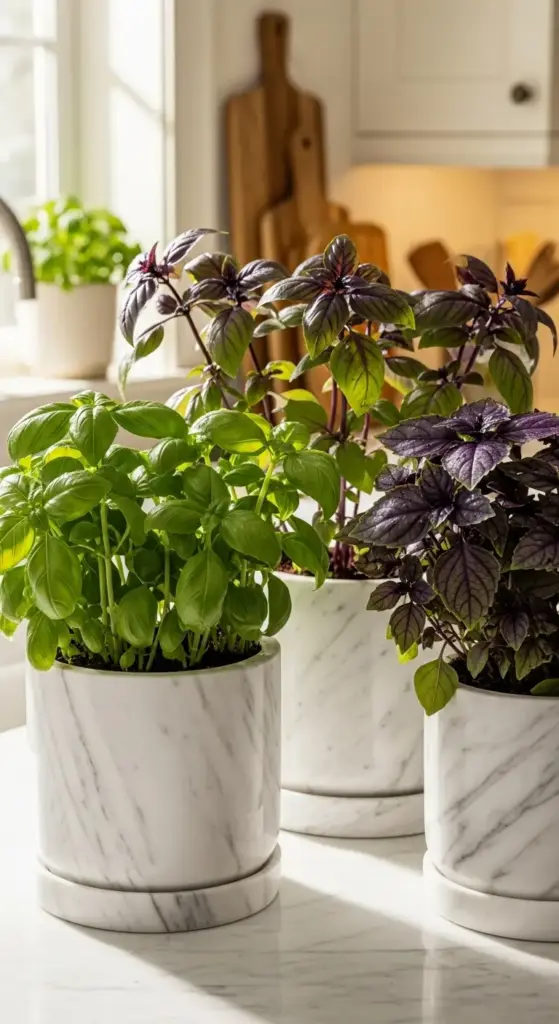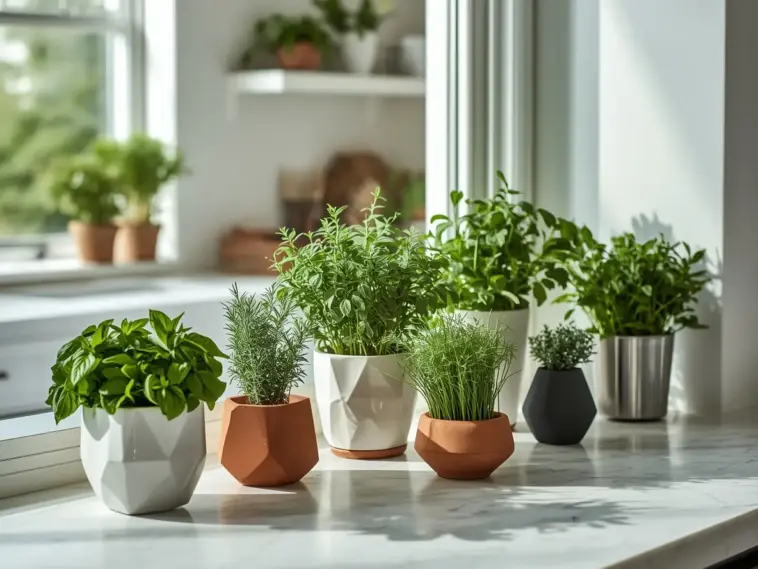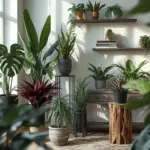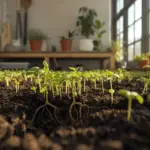Ever wondered how Michelin-starred chefs maintain their culinary edge even at home? Here’s a secret: 73% of top restaurant owners grow their own herbs indoors!
I’ve spent years researching the home gardens of acclaimed chefs, and what I discovered will transform your kitchen into a sophisticated culinary sanctuary.
These aren’t just any herb gardens – they’re carefully curated, design-forward installations that serve both form and function.
From sleek minimalist planters that complement modern home decor to vintage-inspired containers that add rustic charm, these seven indoor herb pot ideas will elevate your cooking game while creating Instagram-worthy kitchen aesthetics.
Ready to bring restaurant-quality freshness to your daily meals?
1. Sleek Marble Planters for Basil Perfection

I’ll be honest – I used to think marble planters were just for show. Boy, was I wrong about that assumption!
My first marble planter was an impulse buy from a fancy kitchen store in Chicago. I figured it would look good on my windowsill, but I had no clue about the science behind why marble containers actually work so well for herbs.
Why Professional Chefs Swear by Marble
Here’s what blew my mind: marble naturally regulates soil temperature better than any other material I’ve tried. The thermal mass of marble keeps your basil roots happy even when your kitchen gets crazy hot during summer cooking sessions.
I learned this the hard way after killing three basil plants in ceramic pots during a particularly brutal July. The marble planter I had sitting right next to them? That basil was thriving like it was living in some fancy restaurant greenhouse.
Temperature regulation isn’t just chef talk – it’s real science. Marble absorbs heat during the day and releases it slowly at night, creating this perfect microclimate that basil absolutely loves.
The Best Basil Varieties for Your Marble Setup
After experimenting with probably fifteen different basil types, I’ve narrowed it down to my top three for indoor herb gardening.
Genovese basil is your classic choice – the stuff you get at Italian restaurants. It grows compact and bushy in marble planters, perfect for that authentic pesto flavor.
Thai basil brings this amazing licorice-like taste that transforms your stir-fries. Plus, the purple stems look incredible against white marble – total Instagram material.
Purple Ruffles basil is my secret weapon for impressing dinner guests. The deep purple leaves create this stunning contrast in marble containers, and the flavor is surprisingly mild and sweet.
Styling Your Marble Herb Garden
The trick to making marble planters work with modern kitchen aesthetics is all about proportion and placement. I made the mistake of buying planters that were way too small for my kitchen island – they just looked lost.
Go for planters that are at least 6-8 inches in diameter for single basil plants. Trust me on this one – I’ve got the photos of my sad, tiny planters to prove it.
White Carrara marble works with literally everything, but if you’ve got warm wood tones in your kitchen, consider cream or beige marble varieties. The home decor integration should feel natural, not forced.
Drainage: The Make-or-Break Factor
Here’s where most people mess up with marble planters – and I was definitely one of them initially. Proper drainage in marble containers requires a bit more thought than your average terracotta pot.
I drill drainage holes myself now using a masonry bit, but you can buy pre-drilled marble planters if you’re not into DIY projects. The key is having at least three holes in the bottom – one just isn’t enough for healthy root development.
Add a layer of small pebbles or broken pottery shards at the bottom. This prevents soil from clogging your drainage holes and creates better airflow around the roots.
Restaurant-Quality Care at Home
The secret to restaurant-quality basil isn’t complicated, but it does require consistency. I water my marble-planted basil every other day, checking the soil moisture with my finger about an inch down.
Morning watering works best because it gives the plants time to dry before evening. Wet leaves overnight can lead to fungal issues – learned that one the expensive way.
Pinch the flowers as soon as you see them forming. This keeps the leaves tender and prevents that bitter taste that happens when basil goes to seed.
Harvesting technique matters too – always cut just above a pair of leaves, not randomly. This encourages bushier growth and more leaves for your cooking adventures.
Ready to discover how vintage copper pots can transform your rosemary game? Click the “next” button below to learn why copper containers create the perfect environment for aromatic herbs – plus the styling secrets that’ll make your kitchen look like it belongs in a design magazine!










GIPHY App Key not set. Please check settings